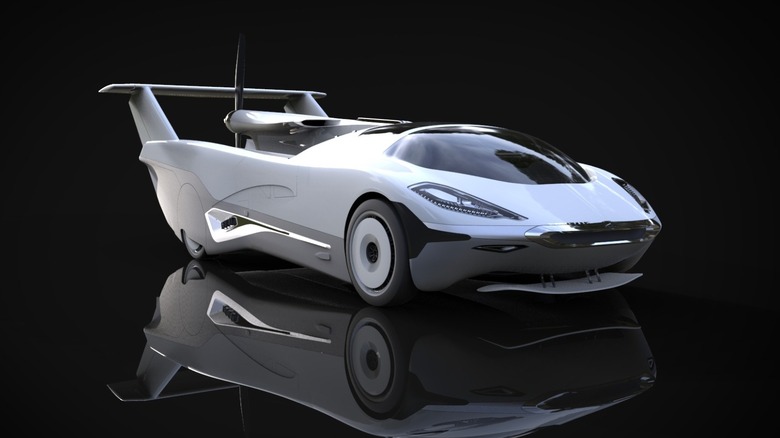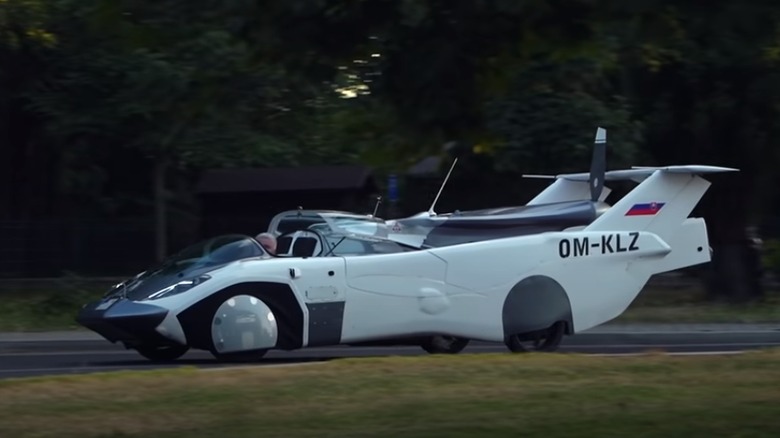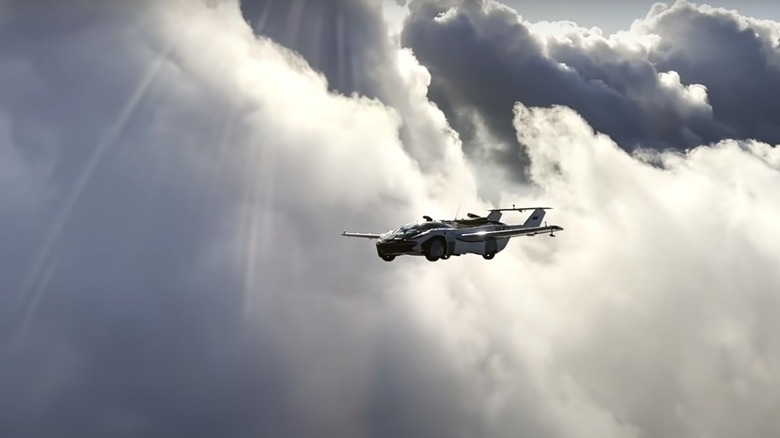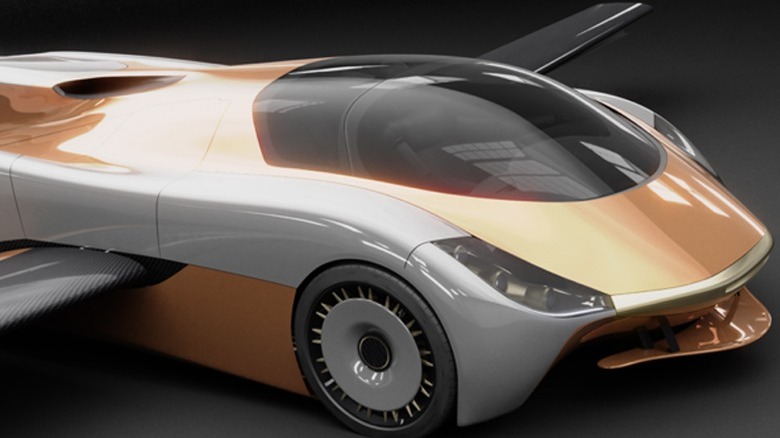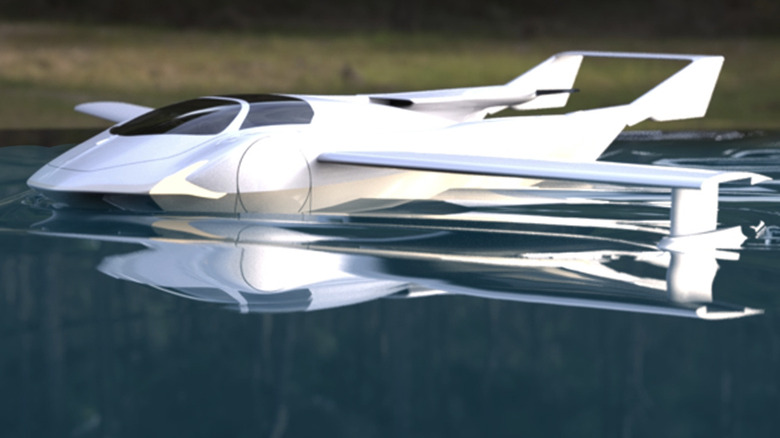The BMW-Powered Flying Car: Everything We Know So Far
You may know BMW as makers of the ultimate driving machines, but the German automaker first dabbled in aircraft engines a decade before launching its first four-wheeled car, the 3/15 Wartburg, in 1928. BMW's spinning propeller badge harks back to the company's industrial origins in 1916, so it's safe to say the brand knows a thing or two about engine manufacturing in general.
Most recently, there's a BMW-powered flying car making raves all over the internet. We're talking about the AirCar by Slovakian technology and transport company Klein Vision. It's not a BMW-branded flying car, mind you, but it does have a BMW gasoline engine.
Klein Vision founder and CEO Stefan Klein's first flying car dates back to 1989 with the Aeromobil 1, a three-wheeled aircraft with a canard-type design and four lift surfaces. However, it failed to provide "optimal results" during its practical driving test due to its moderate width, so Klein developed the Aeromobil II in 1996, a transforming car-slash-aircraft with an improved design for airworthy on-road performance.
Klein Vision AirCar: Realizing the dream
Stefan Klein co-founded Klein Vision in 2017 with entrepreneur and co-founder Anton Zajac. The duo immediately developed the AirCar using brand-new technology and no less than twelve patents to transform the vehicle from car to aircraft and vice versa.
The AirCar has four wheels, retractable wings, a folding tail, and a parachute deployment system. It completed its first maiden flight in 2020, and it made its first inter-city flight in June 2021 between the Nida and Bratislava international airports.
It also finished over 40 hours of test flights under the CAA's (Civil Aviation Authority) supervision. "AirCar combines top innovations with safety measures in line with EASA standards," said René Molnár, the director of the Civil Aviation Division (Transport Authority of Slovakia). "It defines a new category of a sports car and a reliable aircraft."
Certificate of Airworthiness
In January 2022, the AirCar achieved the all-important step in transitioning from a mere flight-of-fancy to a mass-produced flying car. The Slovak Transport Authority and the European Aviation Safety Agency (EASA) gave the AirCar a Certificate of Airworthiness after achieving 70 hours of flight testing with over 200 takeoffs/landings and a full range of performance and flight maneuvers.
The Klein Vision AirCar is now legally free to explore the skies above Slovakia. More importantly, it means the AirCar is inching closer to mass production, the first flying car to do so. "Fifty years ago, the car was the epitome of freedom," said Klein Vision co-founder Anton Zajac. "AirCar expands those frontiers by taking us into the next dimension, where the road meets the sky."
BMW powerplant
The Klein Vision AirCar draws power from a BMW-sourced 1.6-liter four-cylinder gasoline engine with 140 horsepower, enough to generate up to 621 miles (1,000 km) of range in the production version. It can also climb to 8,200 ft. and has a 186 mph (300 kph) cruising speed. Klein Vision adds that the AirCar could be pre-approved for flight in the next twelve months, with production starting mid-2023, fingers crossed.
The Klein Vision engineering team spent over 100,000 hours developing and testing the two-seat AirCar prototype. However, the company has progressed in a new lineup of dual-mode vehicles.
Flying boat, anyone?
The AirCar will spawn into four versions if all goes according to plan. There's a two and four-seat AirCar in the pipelines, and Klein Vision is also working on a twin-engine, high-performance model and a flying boat concept. At this point, we're not sure if the flying boat will come with four wheels like the AirCar, but it seems Klein Vision has all the bases covered in fulfilling humanity's passion for flight.
We're also keeping a close eye on the Terrafugia Transition, a similar flying car with two seats, folding wings, and a gasoline-hybrid powertrain. The Federal Aviation Authority (FAA) recently granted the Transition a Special Light-Sport Aircraft (LSA) airworthiness certificate after completing 80 days of flight testing last February, 2021.
